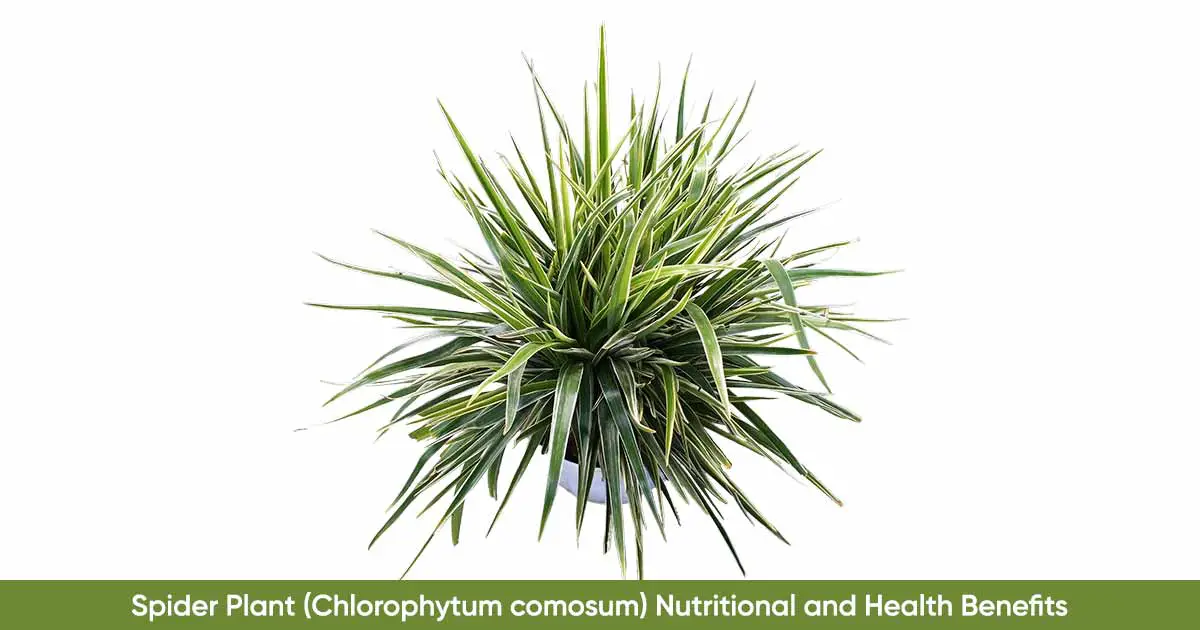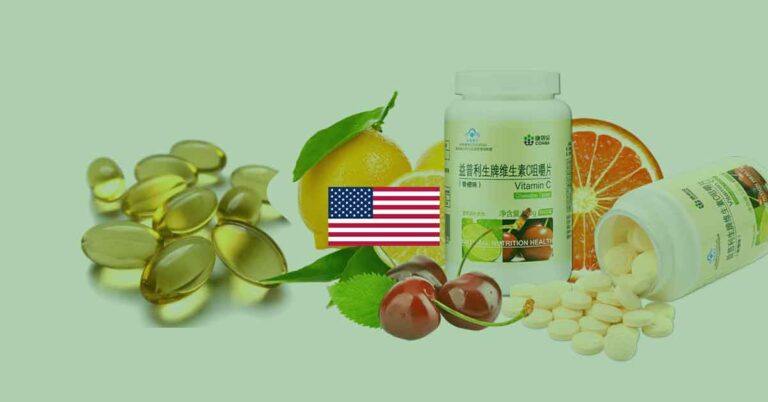Spider plant (Chlorophytum comosum), also called spider ivy, is a fast-growing lily-like plant that originates from the coastal areas of South Africa, and Tropical Asia. The name, spider plant, is gotten from the small plantlets produced on long trailing stems, which looks like the spider. Chlorophytum comosum belongs to the Liliaceae family.
The erect herbaceous clump-forming, perennial herb has hairy, and often purple stems and many branches. It is one of the most cultivated houseplants in the world, as it is easier to grow and tolerate most soil conditions. It has thick, fleshy roots and rhizomes that store water, helping it to survive drought.
The leaves have narrow, strap-shaped leaves which arise from the central point. The leaves may be solid green or variegated with lengthwise stripes of white or yellow. At the end of the stems are small white, star-shaped flowers. Pollination of the flower leads to a leathery, 3-angled capsule-type fruit, which contains flat black seeds. The long, wiry stems of about 2 feet (0.61 m) long may bear leaves.
Some Important Varieties of Spider Plant Includes:
- ‘Variegatum: Produces fewer leaves, and has broad leaves with white margins.
- ‘Milky Way’: Has lighter appearance than other cultivars due to the leaves which possess green margins and a broad white to cream center.
- ‘Vittatum’: Slower growth than the green types. The leaves are dark green, with a wide, creamy white stripe down the center of each leaf.
- ‘White Stripe’: Has cream to yellowish flowers instead of green. There is also a narrow white to cream line down the central leaf vein, but is lost with ageing.
The young leaves of spider are often used as spinach, and used as a vegetable for cooking in Africa. It is used fresh or dried for storage. It can be used later with maize meal. Spider leaves are rich in magnesium, iron, and nicotinic acid.
The tender leaves are bitter, but they are boiled and cooked with other vegetables like cowpeas, amaranth. Adding white gravy (milk and flour gravy) could help to reduce the bitterness. Some add sliced onions, carrot, and garlic in coconut oil to the leaves.
In traditional medicine, the root of spider plant is used in Chinese traditional medicine to treat bronchitis, bone fractures and burns. In Africa, the infusion of the root is used to treat chest pain. The leaves are used for managing constipation, while the boiled leaves’ infusion are used for diarrhea.
Constituents of Spider Plant
The root tubers of spider plant contain calcium, potassium, sodium, zinc, and iron, with an energy value of 281.4 to 303.9 kcal per 100 g of the plant. The leaves contain 5% protein, 6% carbohydrates, minerals such as calcium, phosphorus and iron, vitamin A, and C.
Bioactive compounds in the spider plant includes saponins such as gitonin and desgalactotigonin, and sapogenins such as gitogenin, hecogenin and tigogenin. There are sugars such as apiose, glucose and galactose.
There are fatty acids such as palmitic acid, linoleic acid, stearic acid, stigmastane (stigmasterol, γ-Sitosterol).
Health Benefits of Spider Plant (Chlorophytum comosum)
Spider plant may have antitumor, antiproliferative, indoor air-purifying, and burn wound remedy properties.
Antioxidant effect:
The leaves of the green type, Chlorophytum comosum exhibit strong antioxidant and reducing power due to the presence of phenolic compounds.
Anticancer effect:
The butanol root extract of C. comosum induce apoptosis in human cervical adeno carcinoma, T-cell leukemia, promyelocytic leukemia, and monocyte tumor, when analysed by terminal deoxynucleotidyl transferase mediated biotin dUTP-Nick End-Labelling method (TUNEL) (Matsushita H et al., 2005).
Keeps the air healthy:
Spider plant also absorbs formaldehyde, xylene, benzene, and carbon monoxide from indoor air, making it effective in keeping homes and offices air free from these chemicals.
References
- https://mastergardener.extension.wisc.edu/files/2015/12/Chlorophytum_comosum.pdf
- https://www.irjponline.com/admin/php/uploads/2202_pdf.pdf
- https://www.ncbi.nlm.nih.gov/pmc/articles/PMC8840168/
- https://www.infonet-biovision.org/PlantHealth/Indigenous/spider-plant






